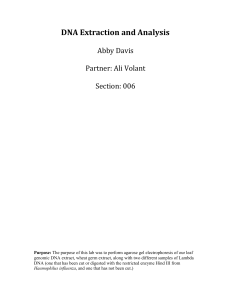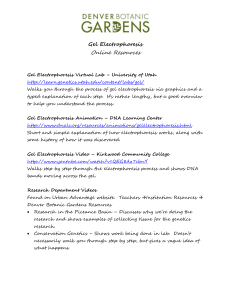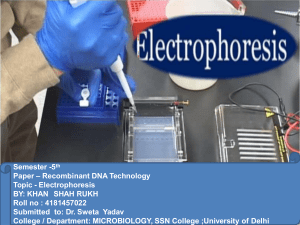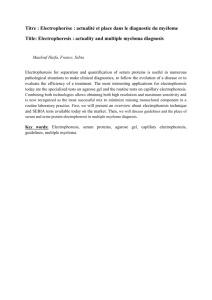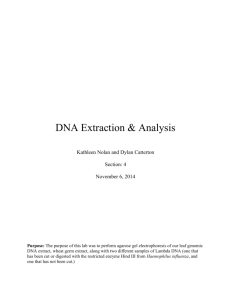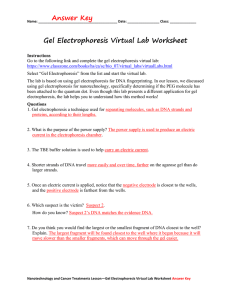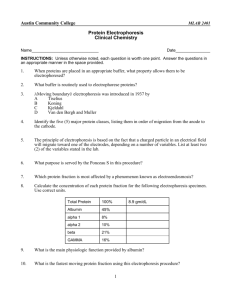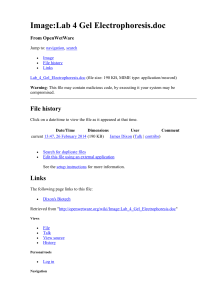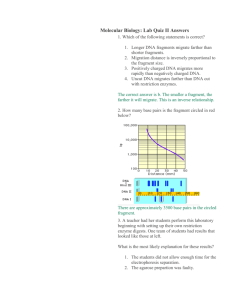Lab questions only
advertisement
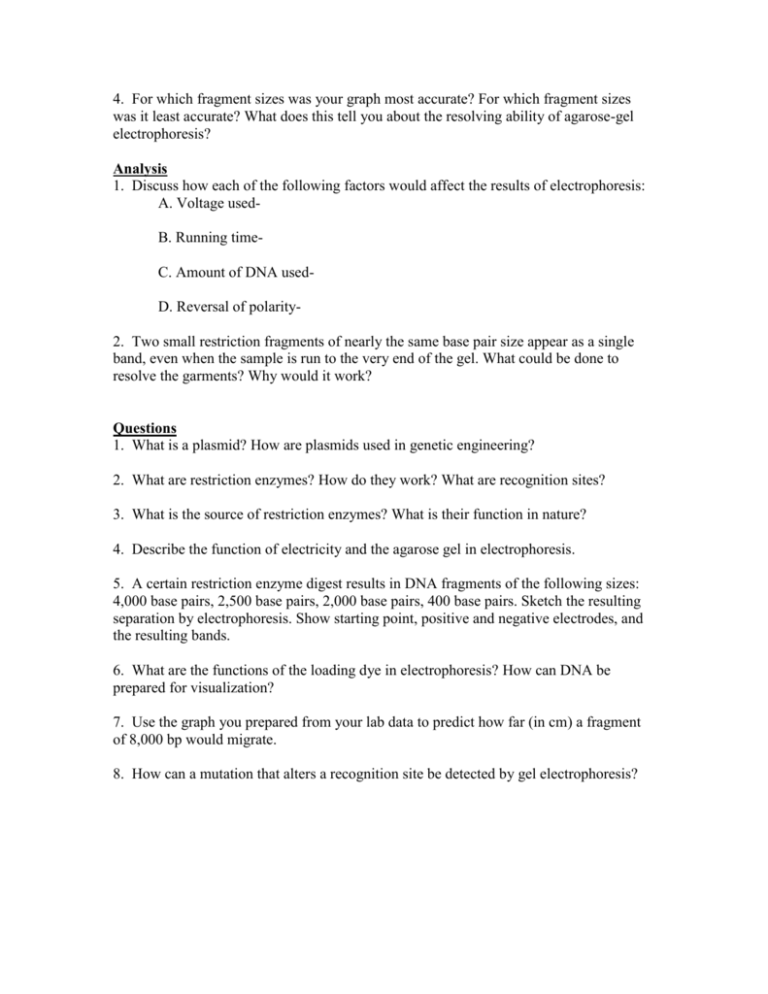
4. For which fragment sizes was your graph most accurate? For which fragment sizes was it least accurate? What does this tell you about the resolving ability of agarose-gel electrophoresis? Analysis 1. Discuss how each of the following factors would affect the results of electrophoresis: A. Voltage usedB. Running timeC. Amount of DNA usedD. Reversal of polarity2. Two small restriction fragments of nearly the same base pair size appear as a single band, even when the sample is run to the very end of the gel. What could be done to resolve the garments? Why would it work? Questions 1. What is a plasmid? How are plasmids used in genetic engineering? 2. What are restriction enzymes? How do they work? What are recognition sites? 3. What is the source of restriction enzymes? What is their function in nature? 4. Describe the function of electricity and the agarose gel in electrophoresis. 5. A certain restriction enzyme digest results in DNA fragments of the following sizes: 4,000 base pairs, 2,500 base pairs, 2,000 base pairs, 400 base pairs. Sketch the resulting separation by electrophoresis. Show starting point, positive and negative electrodes, and the resulting bands. 6. What are the functions of the loading dye in electrophoresis? How can DNA be prepared for visualization? 7. Use the graph you prepared from your lab data to predict how far (in cm) a fragment of 8,000 bp would migrate. 8. How can a mutation that alters a recognition site be detected by gel electrophoresis?


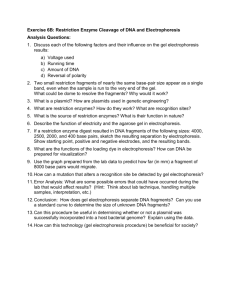

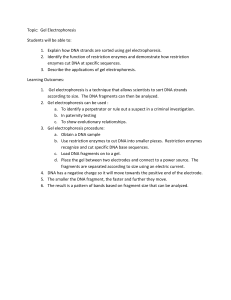

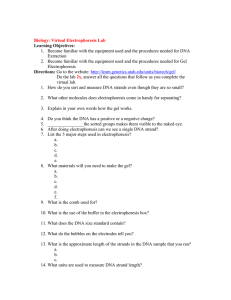
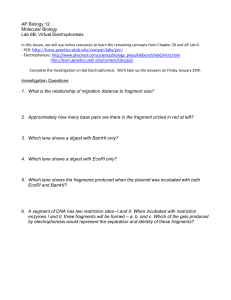
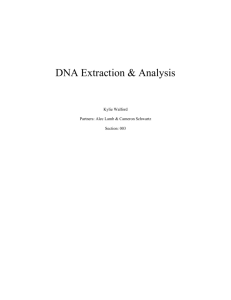
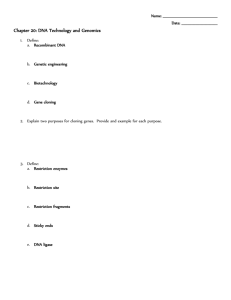
![Student Objectives [PA Standards]](http://s3.studylib.net/store/data/006630549_1-750e3ff6182968404793bd7a6bb8de86-300x300.png)
